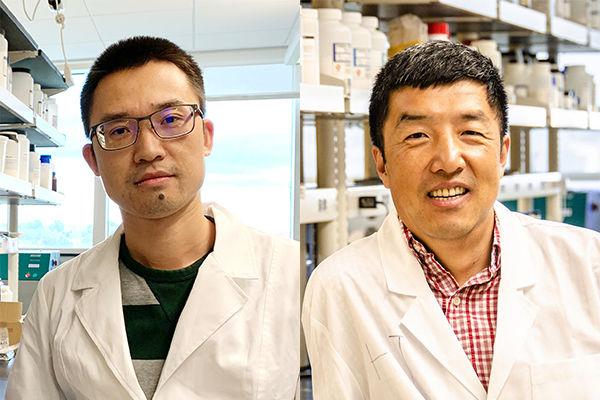
Credit: WVU
Engineers at West Virginia University are creating a new energy conversion system that has the potential to bridge renewable energy sources into the existing United States energy infrastructure.
As solar and wind energy become increasingly necessary to combat climate change, new energy conversion and storage technologies will be needed to maintain stability across the power grid.
“People talk a lot about a cleaner future and vow to replace carbon-based energy systems with renewables,” said Wenyuan Li, research assistant professor in the Statler College. “Attention has been focused on solar panels and wind turbines, but technology like this is the very throttle that decides how much renewables can eventually penetrate to the power grid and can be put to real use.”
Li and Xingbo Liu, interim associate dean for research and professor of mechanical and aerospace engineering, will work with manufacturing company Saint-Gobain and other partners to develop an efficient energy conversion system that has the ability to both split water to generate hydrogen and use hydrogen as a fuel to generate power, thanks to a $3 million award from the United States Department of Energy.
According to Li, the system will work as a power sink to reconcile the supply and demand conflict between renewables and power grids.
“Without a system like this in the middle of renewables and the power grid, power from renewables in large chance turns out to be dump power–power in excess of real-time local requirements, not needed by the power grid, but to be dissipated by dump loads as heat,” Li said.
Currently, renewable energy can only be collected and used whenever it is readily available –when the sun is shining, or the wind is blowing –causing a lag between production and demand by people. Li explained that this time scale between storage and generation can be weeks, or even an entire season.
Two distinct conversion and storage systems are currently under development, a system using power to generate hydrogen and a system that uses hydrogen to generate power, Li explained.
“Although they are very similar, one cannot do the same job the other does,” Li said. “This project will use material design innovation to combine these two to one. Such a single system will meet the energy conversion and storage requirements.”
Today, an estimated 4.67 terawatt-hours of electricity storage exists. The total electricity storage capacity is set to triple in energy terms by 2030 if countries proceed to double the share of renewables in the world energy system, according to the International Renewable Energy Agency.
“Compared to other technology currently under development, the technology in this project can keep energy storage going as long as enough empty hydrogen tanks can be made, which is the least difficult compared to others.” Li said.
The integration of renewables to the power grid will ultimately increase the overall efficiency of power generation and decrease carbon dioxide emissions from power plants, Li explained, making this system an integral component for a clean energy future.
###
Media Contact
Paige Nesbit
[email protected]
Original Source
https:/



![Nickel-Catalyzed Regioselective Hydrogen Metallation Cyclization of Alkynylcyclobutanones Enables Synthesis of Bicyclo[2.1.1]hexanes](https://bioengineer.org/wp-content/uploads/2025/11/Nickel-Catalyzed-Regioselective-Hydrogen-Metallation-Cyclization-of-Alkynylcyclobutanones-Enables-Synthesis-of-120x86.jpeg)
